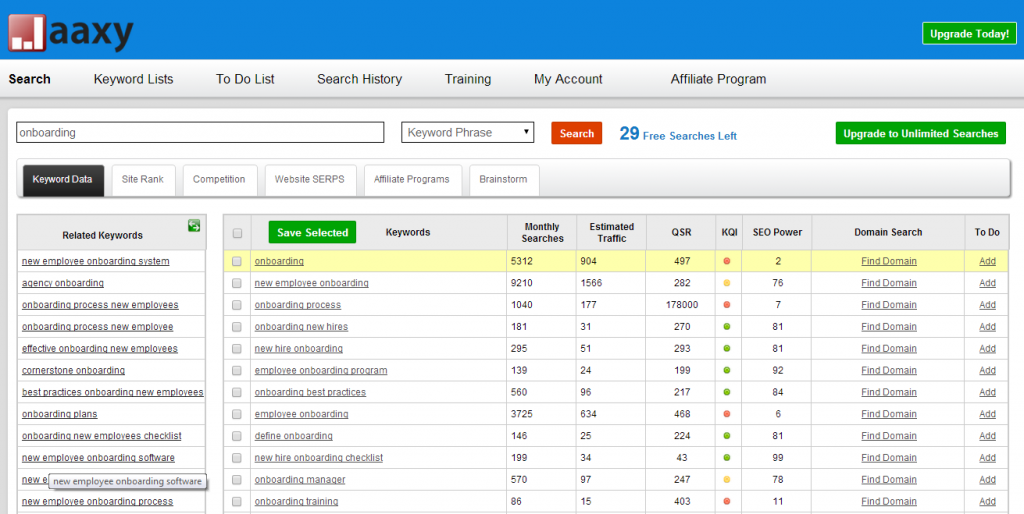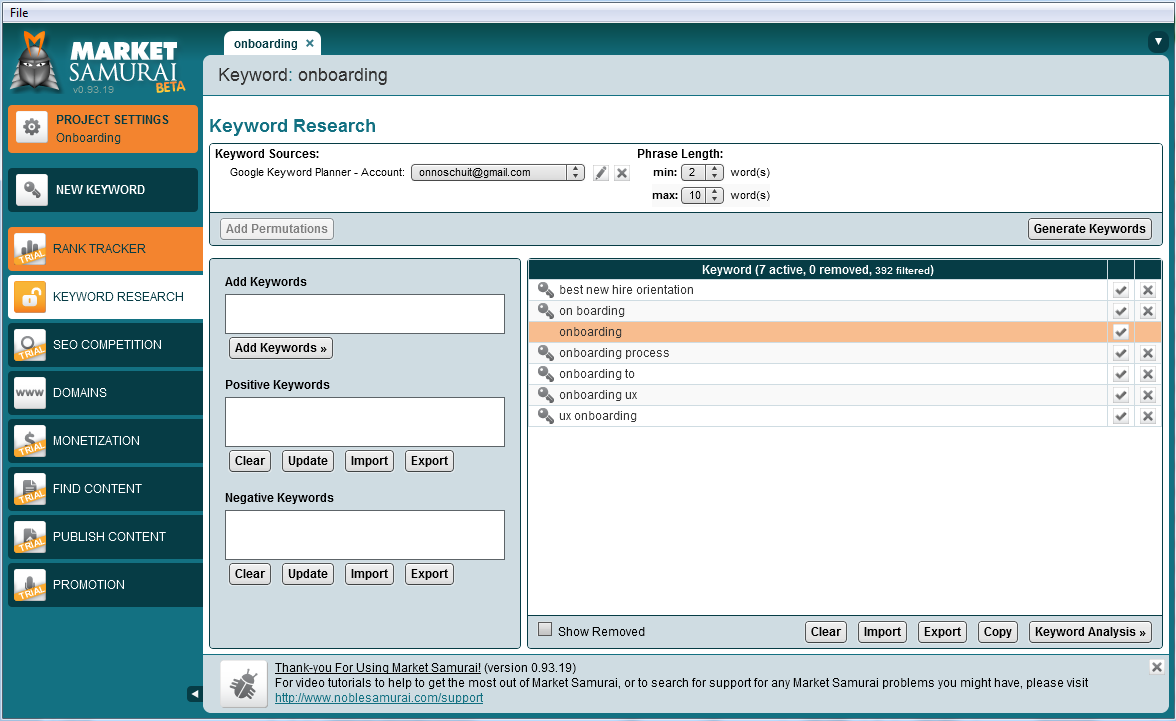Dirty Little Secret: Online Training Costs Way Too Much
Online training is often presented as a way to save costs on training. But as we are about to reveal, the costs behind producing and offering online training are staggering. Compared to ‘traditional’ training, you won’t save a dime. Here, we’ll uncover how you can save on the costs of online training. Hint: trainers don’t have to start from scratch.
We’ll even give you a link to a cost savings calculator, at the bottom of this article. Before we do that however, let’s get a grip on what online training is.
What Is Online Training Anyway?
Online training is training supported by online tools, or taking place through a website or a mobile application (you know, an app on your smartphone). Online training comes in two flavors:
- Synchronous online training: trainees and trainer are present at the same time, just not in the same place (think of a video conference or a webinar).
- Asynchronous online training: trainees and trainer only meet each other in an online discussion forum.
In asynchronous online training the trainer has more of guiding role in what is essentially a ‘self paced’ training. Trainees can take the training on their own time, e.g. from home.
These flavors can also be mixed, of course. You could set a date for a video conference for instance, while adding the requirement that everybody complete an online test (quiz) first. Most online training platforms support setting such a requirement. The platform simply checks whether you’ve got your test completed before allowing you inside the video conference. By the way, an online training platform is usually called an LMS, which stands for learning management system.
Cost of Synchronous Online Training
Basically, the cost of synchronous online training is predictable and relatively cheap. You need video conferencing software, or webinar software, and that software is your main cost. A webinar is you talking live on video (presented through a website) while your trainees are listening and typing in comments or questions. To start with webinars or video conferencing, it’s probably cheaper to not own the actual software (and the required servers or internet computers) – unless you’re a really big company.
Instead, look at services such as GoToWebinar and WebinarJam which start at $468 and $497 a year, respectively (GoToWebinar has restrictions on the number of attendees and presenters, but also offers a monthly subscription of $49).
In addition to the software purchase, you need to factor in the costs of preparing the webinar just like any other ‘live’ (or face-to-face) training session. This does not deviate too much from your usual preparation time, for a training session. One estimate for an hour long Instructor-Led Training (ILT) comes down to 34 hours of preparation. Next, we present the cost components of an 8 hour synchronous online training session, e.g. a webinar, for 20 trainees and one trainer – as compared to ‘traditional’ training (which includes travel expenses, etc).
As a side note: an 8 hour webinar would be way too long, but this makes it easier to compare the costs with a traditional training session, which usually lasts 4 – 8 hours.
| Cost Components: Synchronous Training & ‘Traditional’ | ||
|---|---|---|
| A. | Trainer Cost: Hourly Wage | $50 |
| B. | Hours of Development & Preparation for One Hour of Training | 34 |
| C. | Webinar Software Cost (simplified) | $50 |
| D. | # Trainees | 20 |
| E. | Trainees’ Hourly Wage | $25 |
| F. | Lost Productivity / Trainee / Hour | $50 |
| G. | Travel Expenses / Trainee (Rental Car & Airfare) | $300 |
| H. | Overnight Stay / Trainee (Meals & Hotel) | $150 |
| I. | Training Materials / Trainee (Handouts, Binders, etc) | $20 |
| J. | Training Duration (Hours) | 8 |
How does this all add up?
| Costs of 8 Hours Synchronous Online Training | ||
|---|---|---|
| ‘Traditional’ | Synchronous | |
| Trainer Cost: J x A | $400 | $400 |
| Training Development Cost: J x B x A | $13,600 | $13,600 |
| Cost of Lost Productivity: J x D x F | $8000 | $8000 |
| Employees in Training: J x D x E | $4000 | $4000 |
| Software | N/A | $50 |
| Logistics: D x (G + H + I) = 20 x $470 | $9400 | N/A |
| Total: | $35,400 | $26,050 |
Great, you can save more than $9000 ($35,400 – $26,050 = $9,350) on traveling expenses and such, with the aid of synchronous online training. This means synchronous online training represents an actual saving compared to a ‘traditional’ training session. Now let’s take a look at the other flavor of online training.
Asynchronous Online Training Costs
With asynchronous online training, such as a self paced online training module, the upfront costs are much higher, but the delivery costs should be lower. As a matter of fact, if trainees can be persuaded to take the training on their own time, the delivery costs are practically zero. (If you’re a trainer and you’re worried about this, see the blog post Cut Your Training Session by Half to find out how you can use online training to your advantage).
In addition, online training materials can double as documentation, reference guides and check lists. There are even more benefits to this kind of online training, but for the cost estimation we’ll try to keep it simple and ignore these.
| Cost Components: Asynchronous Training & ‘Traditional’ | |||
|---|---|---|---|
| ‘Traditional’ | Asynchronous | ||
| A. | Trainer Cost: Hourly Wage | $50 | $100 |
| B. | Hours of Development & Preparation for One Hour of Training | 34 | 220 |
| C. | Software Cost / Trainee (simplified) | N/A | $5 |
| D. | # Trainees | 20 | 20 |
| E. | Trainees’ Hourly Wage | $25 | $25 |
| F. | Lost Productivity / Trainee / Hour | $50 | $50 |
| G. | Travel Expenses / Trainee (Rental Car & Airfare) | $300 | N/A |
| H. | Overnight Stay / Trainee (Meals & Hotel) | $150 | N/A |
| I. | Training Materials / Trainee (handouts, binders, etc) | $20 | N/A |
| J. | Training Duration (Hours) | 8 | 8 |
In this table, the difference between the hourly rate for ‘traditional’ trainers and ‘asynchronous online trainers’ (i.e. instructional designers) is striking. And again, the difference between the development time for 1 hour of traditional training versus 1 hour of asynchronous online training is very significant.
Let’s run the numbers and what this means for the bottom line.
| Costs of 8 Hours Asynchronous Online Training | ||
|---|---|---|
| ‘Traditional’ | Asynchronous | |
| Trainer Cost: J x A | $400 | N/A |
| Training Development Cost: J x B x A | $13,600 | $176,000 |
| Cost of Lost Productivity: J x D x F | $8000 | $8000 |
| Employees in Training: J x D x E | $4000 | $4000 |
| Software: C x D | N/A | $100 |
| Logistics: D x (G + H + I) = 20 x $470 | $9400 | N/A |
| Total: | $35,400 | $188,100 |
Wait, isn’t online training supposed to save costs? Yes, and it does, provided that:
- trainees take the online training on their own time;
- you can spread out the development costs over a large number of trainees
- the online training is used over a longer period of time (reused)
But what if you could drastically lower the costs of asynchronous online training? What if your online training would cost the same to develop as ‘traditional’ training?
Let The Trainers Run The Show
I believe that trainers are highly professional people, capable of developing their own online training. Let me rephrase that: I know this for a fact because I have seen them do it. So let the trainers take over the role of instructional designers, the folks who used to run the online training show.
I also know you don’t need an entire production team to shoot videos and create interactive activities. Nowadays, you should be able to produce 1 hour of online training using the same resources as when developing 1 hour of traditional training. Just buy a decent camera, microphone and an lms subscription (learning management system – your online training platform) and you’ve covered most of the upfront production and delivery costs.
And finally, trainers also have the advantage that they don’t have to start from scratch, when developing online training. They already have their ‘traditional’ training materials. For instance, as a trainer, you can turn your powerpoints into videos with a voice-over. (You can do so much more with online training, but it’s a start).
This is how it looks in numbers when trainers create their own online training:
| Cost Parity Between Asynchronous – & Traditional Training | |||
|---|---|---|---|
| ‘Traditional’ | Asynchronous | ||
| A. | Trainer Cost: Hourly Wage | $50 | $50 |
| B. | Hours of Development & Preparation for One Hour of Training | 34 | 34 |
| C. | Software Cost / Trainee (simplified) | N/A | $5 |
| D. | # Trainees | 20 | 20 |
| E. | Trainees’ Hourly Wage | $25 | $25 |
| F. | Lost Productivity / Trainee / Hour | $50 | $50 |
| G. | Travel Expenses / Trainee (Rental Car & Airfare) | $300 | N/A |
| H. | Overnight Stay / Trainee (Meals & Hotel) | $150 | N/A |
| I. | Training Materials / Trainee (handouts, binders, etc) | $20 | N/A |
| J. | Training Duration (Hours) | 8 | 8 |
Alright, let’s see how this adds up.
| Trainers Run The Online Training Show | ||
|---|---|---|
| ‘Traditional’ | Asynchronous | |
| Trainer Cost: J x A | $400 | N/A |
| Training Development Cost: J x B x A | $13,600 | $13,600 |
| Cost of Lost Productivity: J x D x F | $8000 | $8000 |
| Employees in Training: J x D x E | $4000 | $4000 |
| Software: C x D | N/A | $100 |
| Logistics: D x (G + H + I) = 20 x $470 | $9400 | N/A |
| Total: | $35,400 | $25,700 |
This saves you almost $10,000. If employees take the online training on their own time, savings get even more spectacular: more than $21,000 ($35,400 − $13,700 = $21,700).
To summarize, online training can be a cost real saver if you keep development time to a minimum. Nowadays, you can do that by using high quality, yet affordable hardware (such as recent cameras and microphones) as well easy to use software, such as a learning management system (lms) which is specifically catered to trainers. Using these tools, you can take your existing training materials to create an engaging online training experience.
Sources
- Estimating Costs and Time in Instructional Design
- Does e-learning save money?
- Online Training Cost Savings Calculator (Google spreadsheet, copy first before inputting your own data)
- Online Training Cost Savings Spreadsheet (MS Excel)



















